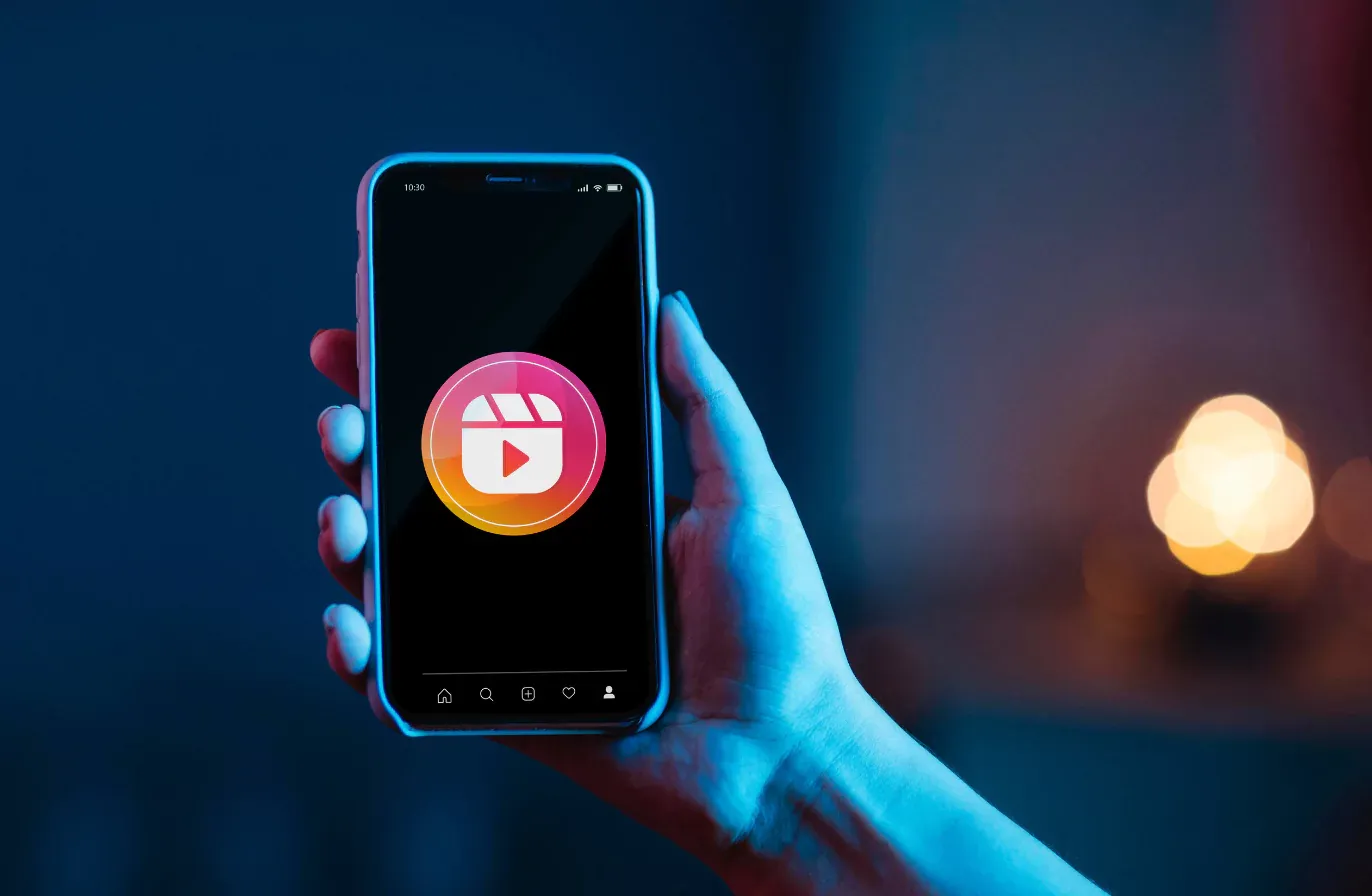[What Data Says]: Instagram Views Per Content Format
Do you know how many Instagram views signal success on the platform? Read our research to discover how many views each format receives on average.

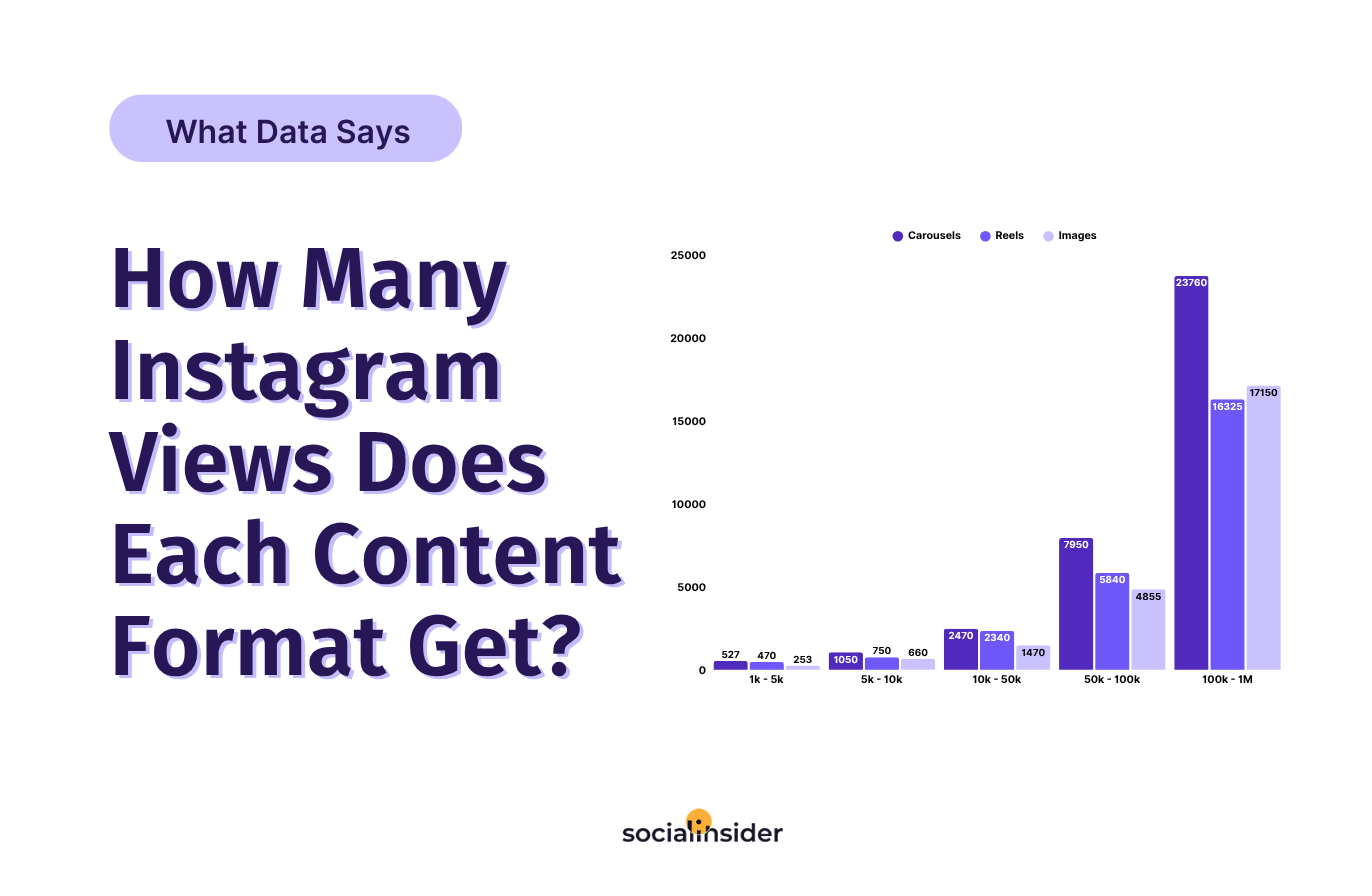
If you're still posting the same way you did last year, you're already behind.
In 2025, Instagram views count more than anything else—literally. Impressions? Gone. Reels views? Merged. Likes? Nice, but not the goal. Now, every format you use is measured by one number: how many times it was viewed.
And here’s the truth: most content doesn’t get watched because it’s not built to hold attention. But that’s fixable.
Whether you’re posting carousels, Reels, Stories, or static images, there’s a smarter way to approach each one—and the difference in Instagram post views can be massive. Let’s break down how to do it right, format by format.
Executive summary
-
Carousels generate the highest number of views across all profile sizes and the number is significantly higher for the largest accounts (between 100K-1M).
-
Instagram Stories get fewer views compared to in-feed posts, and the highest number is registered by the largest brands.
What are Instagram views, and how does Instagram count views?
On Instagram, views represent the number of times your post was played or displayed. But depending on the content type, the measurement may be a bit different.
- For Reels and carousels with videos: A view is counted when someone watches the video for at least 3 seconds. It can autoplay silently, but the viewer has to stick around long enough for the view to count. Only the first qualifying view per person is recorded—loops don’t add more.
- For static image posts and carousels without video: A view is registered the moment your post is seen in-feed. No time threshold, no engagement required.
- For Stories: A view is counted when a user taps into the Story. There's no 3-second rule here—it’s simply based on the open.
Why does views monitoring on Instagram matter more than ever?
Instagram made a defining move in April 2025: it eliminated impressions and Reels-specific views, consolidating everything under one universal metric—views. That single change reshaped how content performance is understood across the platform.
This wasn’t just a backend tweak. It was a shift in Instagram’s entire measurement philosophy. From now on, it doesn’t matter if you're publishing a carousel, a static image, a Story, or a Reel—everything is measured the same way. One metric. Uniform across formats. And it’s called “views.”
The reasoning is clear: simplify reporting, streamline decision-making, and create a more transparent system for evaluating content performance. And whether you manage a brand page or publish as a creator, this change demands a new level of focus. Views are no longer just another number—they’re the core metric that defines visibility.
This update also removes the ambiguity marketers have lived with for years. No more wondering how to compare a Reel to a carousel or a Story to a static post. Now, if a piece of content performs well, it shows up in the Instagram view count. No interpretation needed.
Tracking views on Instagram posts isn’t just helpful anymore—it’s how performance is judged. It’s the number that determines momentum, and in a space where speed matters, those who adapt quickly will win.
Instagram views benchmarks
Across all feed post types
Now that views have become the universal metric on Instagram, content format matters more than ever—and the numbers make it obvious which ones lead.
After analyzing performance across account sizes, the takeaway is crystal clear: carousels are consistently generating the highest number of views on Instagram posts, outperforming both Reels and static images at every tier.
In a nutshell, here’s how different content formats perform in terms of views across multiple profile sizes:
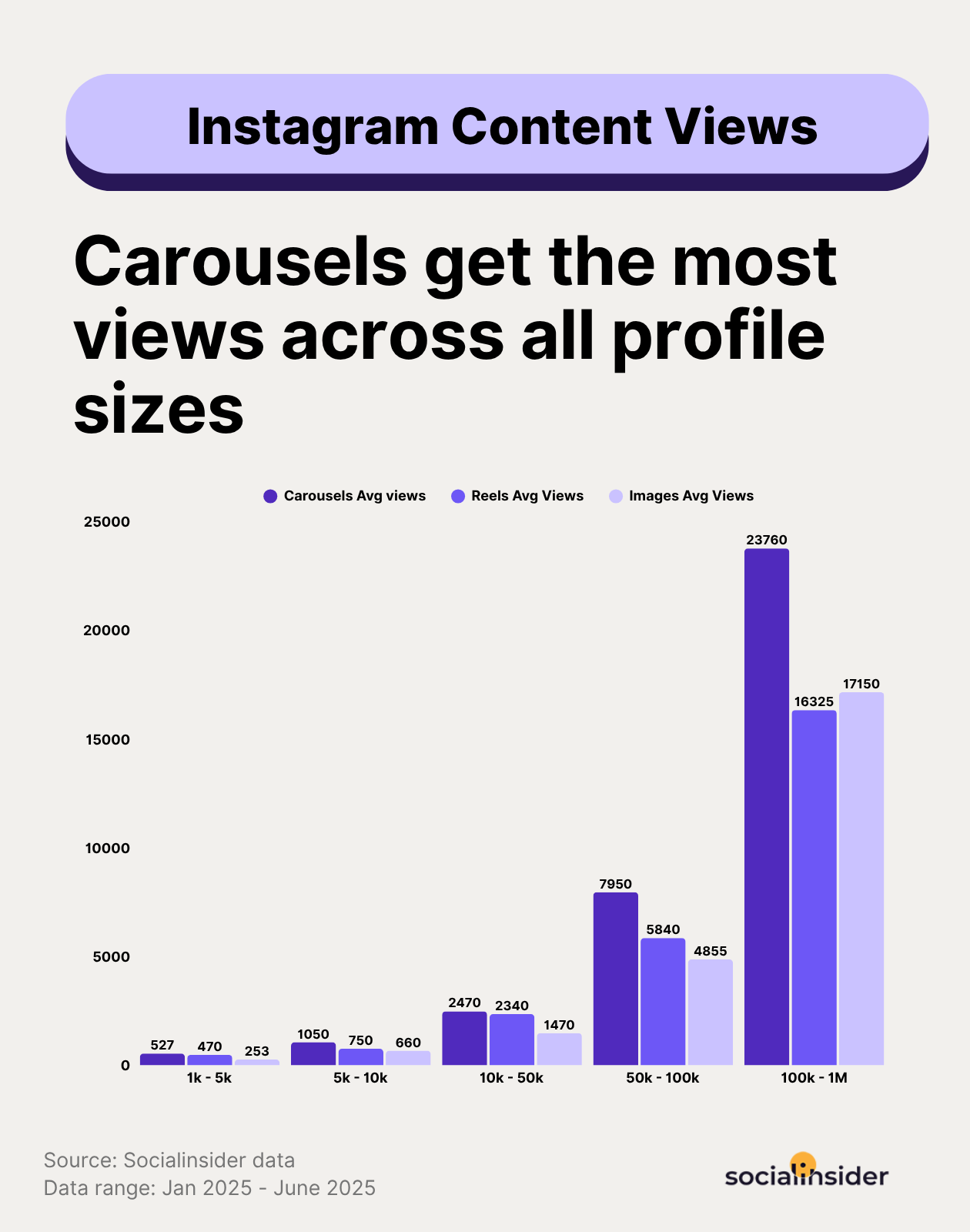
For Stories
While carousels might dominate the feed, Stories still play a critical role in Instagram’s content ecosystem—especially when it comes to maintaining daily visibility and staying top-of-mind with followers. A
nd when we looked at how Story views scale across different account sizes, one pattern stood out fast: larger accounts see disproportionately higher Story view counts.
Let’s break it down:
- 1k–5k followers → 92 Story views
- 5k–10k followers → 137 views
- 10k–50k followers → 395 views
- 50k–100k followers → 975 views
- 100k–1M followers → 1,805 views
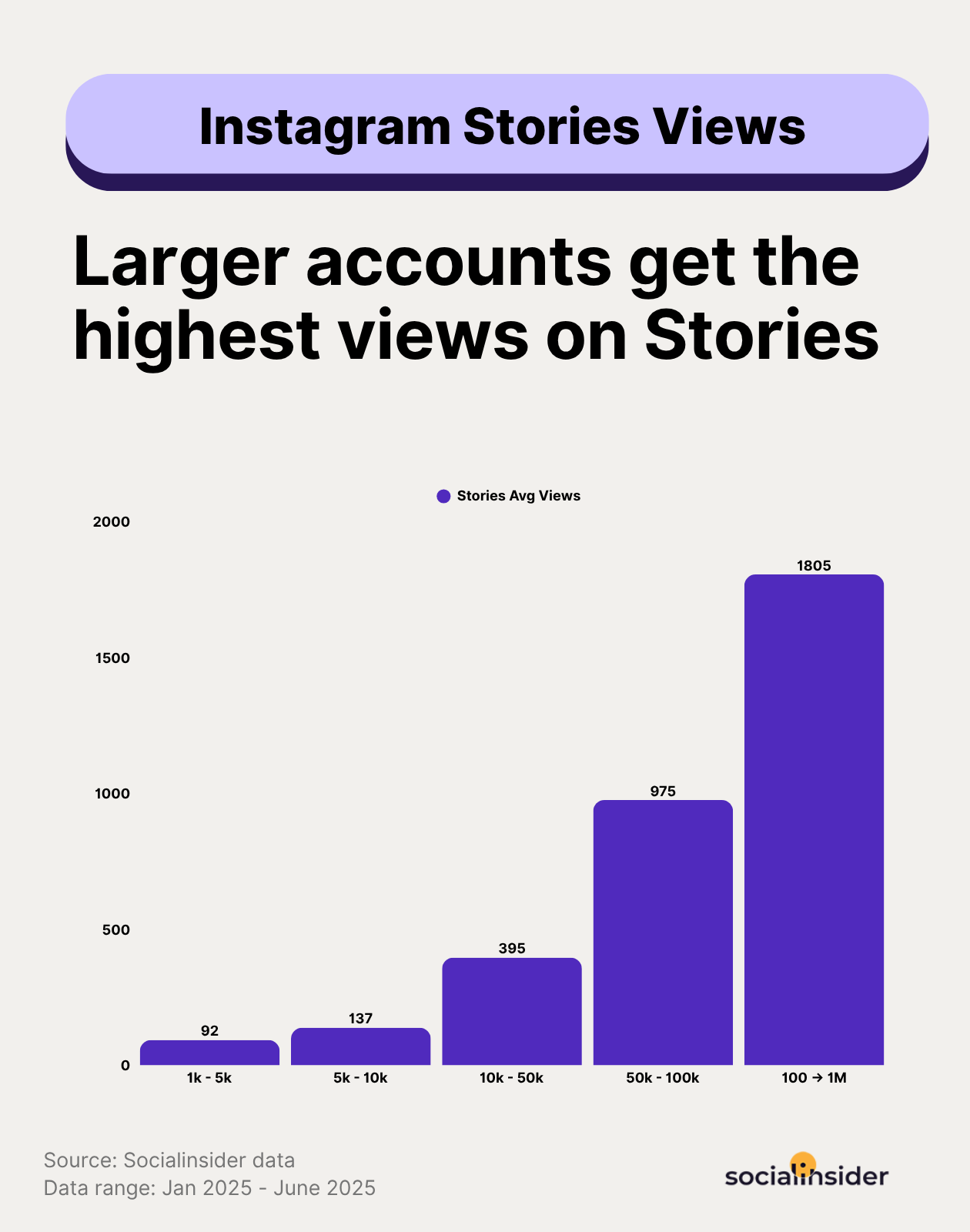
How to identify your best-performing content?
You can’t improve what you’re not tracking—and when it comes to boosting your Instagram view count, knowing which posts are actually driving results is half the battle.
That’s where a dedicated social media analytics tool makes a real difference. Instead of guessing which formats or topics are working, tools like Socialinsider let you analyze performance at both the account and post-format level, so you can see exactly where your content is gaining traction.
Want to know if your carousels consistently outperform Reels? Or which Story themes get the most replays? With Socialinsider, you can filter your data by content format to identify patterns, spot top-performing themes, and understand which creative decisions are actually paying off.
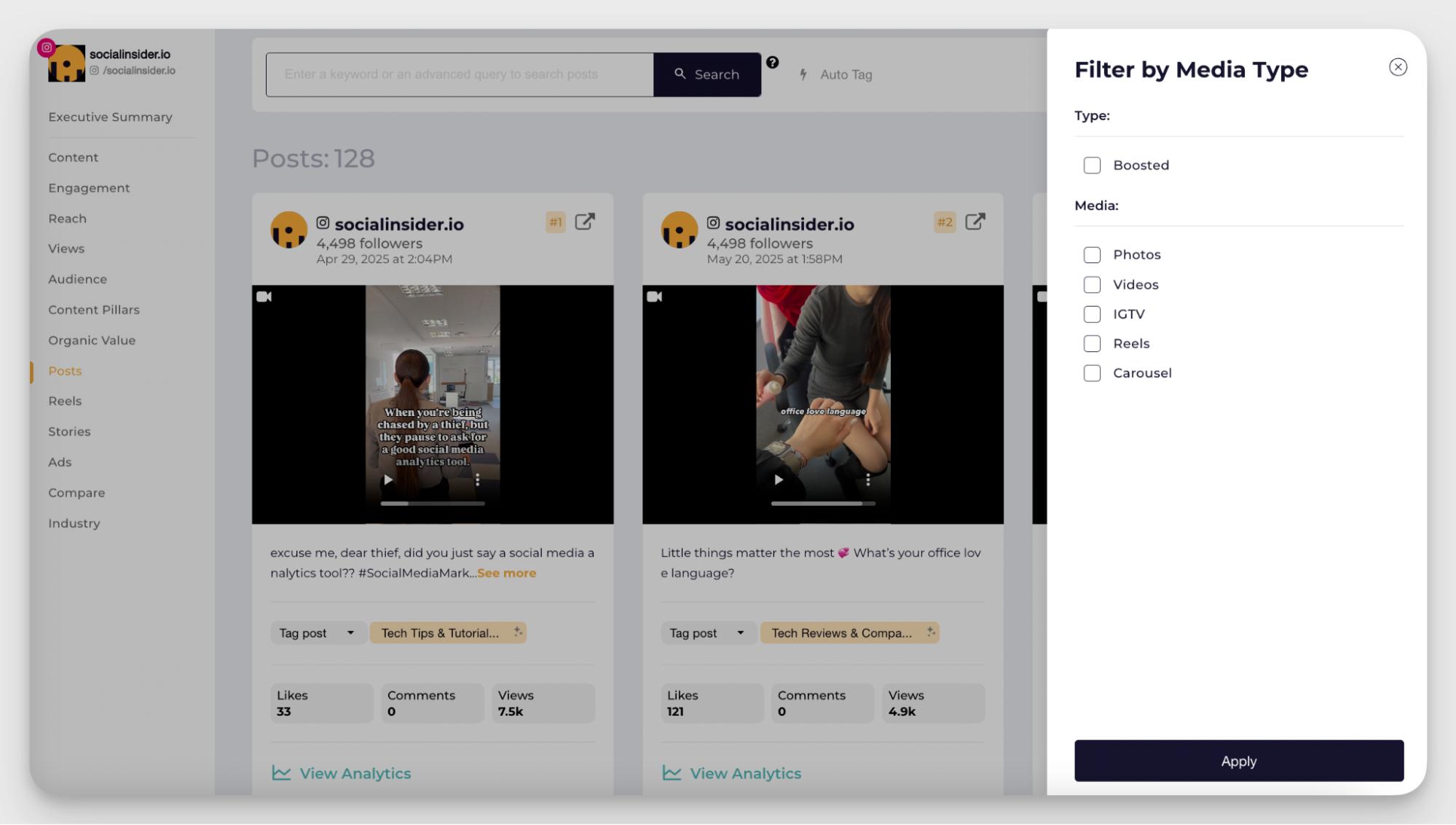
But here’s where it gets especially useful:
To help you spot viewership spikes fast, Socialinsider also offers a views distribution section. It gives you a visual breakdown of how your views are spread across your content, making it easy to spot unusual dips or spikes and the posts leading to those changes.
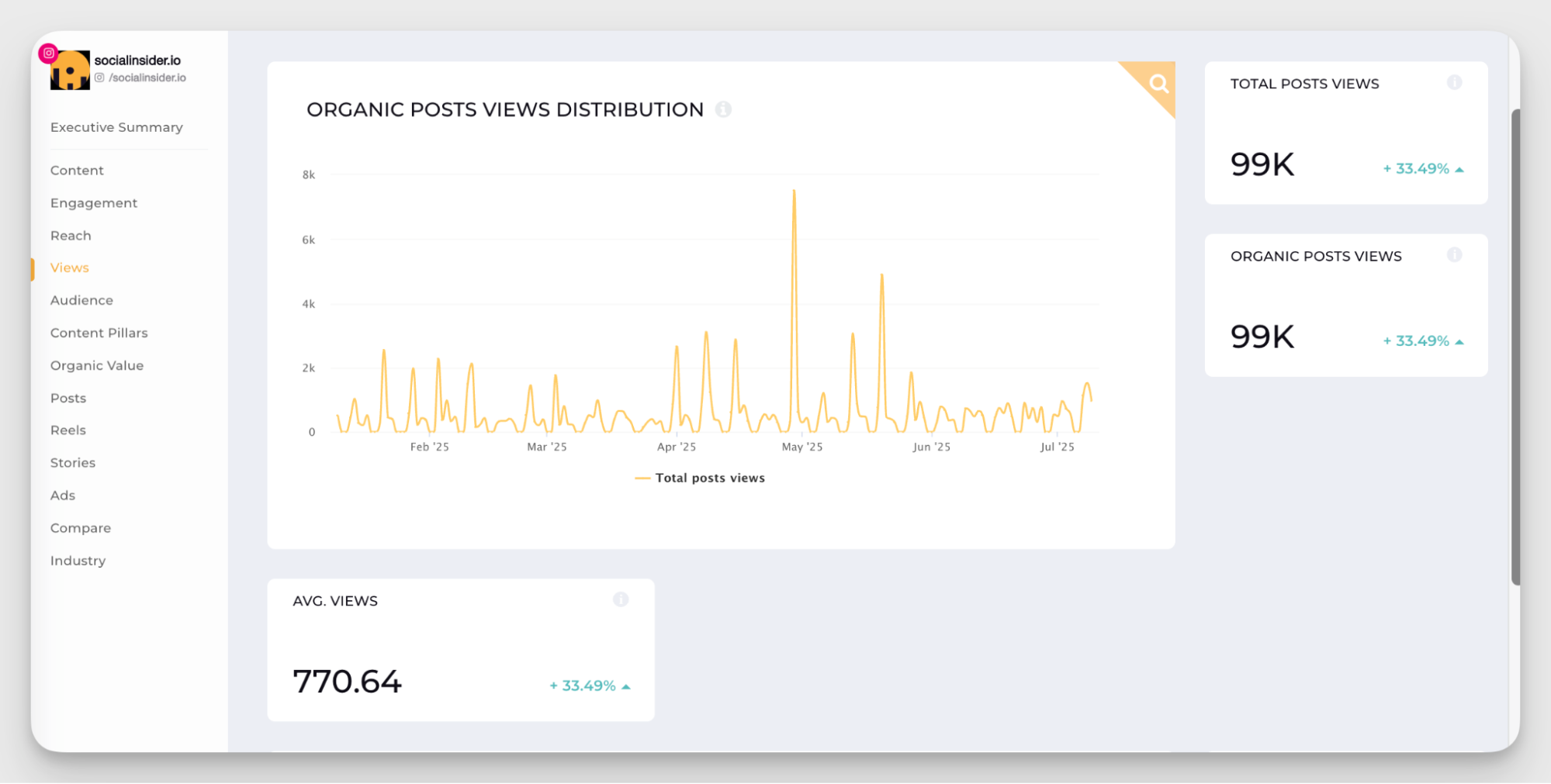
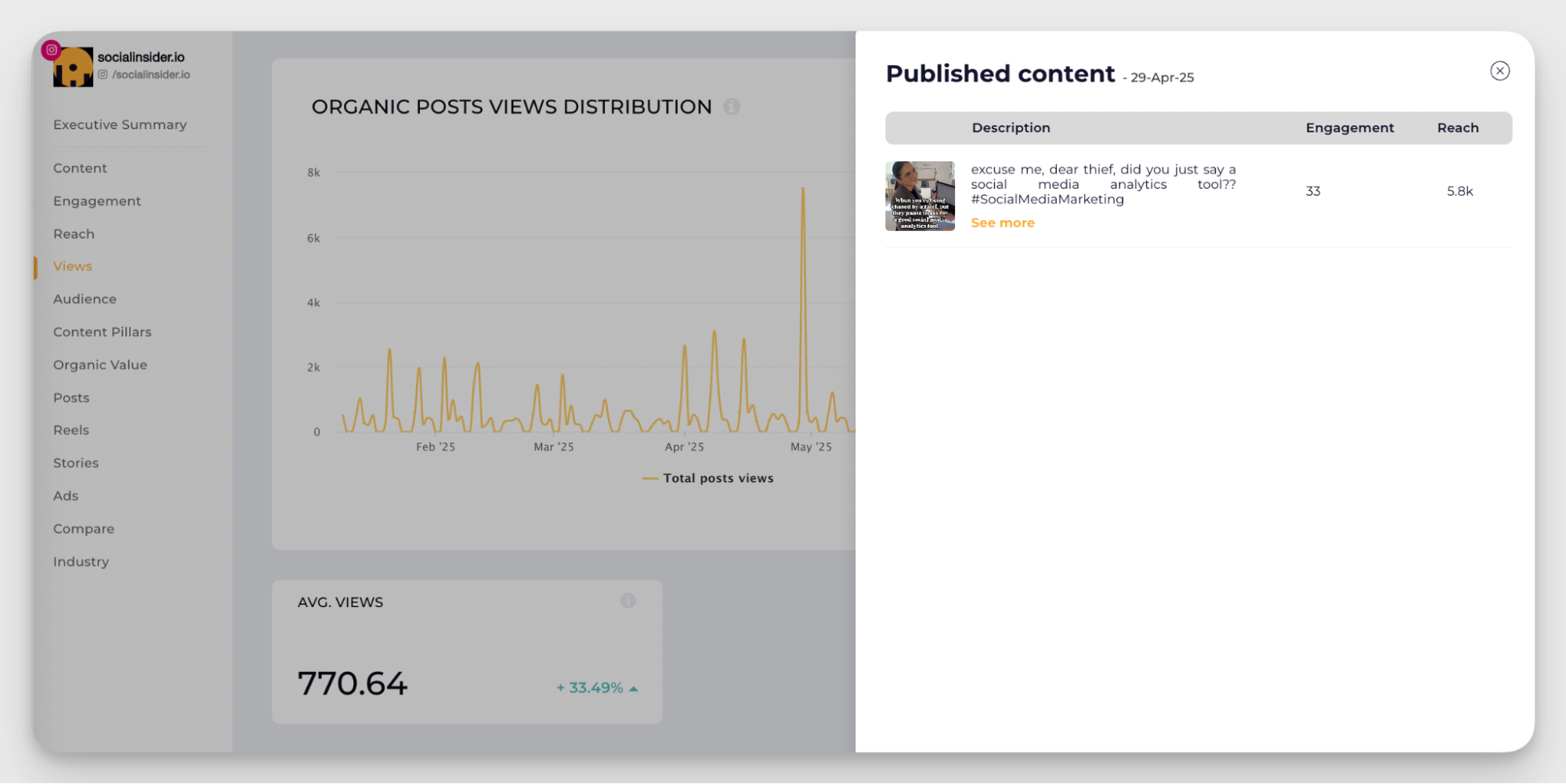
And because Socialinsider covers both in-feed and Story content, you get the full picture—no blind spots. Whether you're refining your daily Story rhythm or deciding how often to post Reels vs. carousels, the platform gives you the clarity to move with intention.
If you’re serious about growing views on Instagram posts, this is the kind of data you want in your corner.
Tips on how to increase your Instagram views
On carousels
Carousels consistently lead in views on Instagram posts—across all account sizes. They’re sticky, they’re swipeable, and they reward structured storytelling.
What to do:
- Slide 1 = Hook. Treat the first slide like a headline. Use bold text, a clear problem, or an intriguing question to grab attention. (e.g. “Struggling to grow on Instagram? Try this.”)
- Slides 2–4 = Value. Deliver quick, scannable info. Think “3 mistakes,” “4 steps,” or “before/after” formats.
- Last slide = CTA. Prompt engagement or action: “Save this for later,” “DM us for the full list,” or “Which one are you guilty of?”
- Design consistency wins. Use 1–2 branded templates to reduce friction and train your audience to expect quality content every time they swipe.
Here's an example of how we did it for Socialinsider:
- We started by announcing what type of information our audience will get from the post
- Presented some data and strategic insights
- Asked our followers what they think about analysis.
On Reels
If your Reel doesn’t stop the scroll in two seconds or less, it’s gone. If it doesn’t give people a reason to share or rewatch, it doesn’t grow.
What to do:
- Start strong. Use a dynamic visual or powerful statement in the first 1–2 seconds. Text overlays help stop the scroll.
- Structure: Hook → Value → CTA. Even a 15-second Reel needs flow. Think of it like a mini-journey with a clear ending.
- Caption context matters. Add a short caption with keywords and optional CTA (e.g. “Save this if you need content ideas next month.”)
- Use trends with your spin. Don’t just follow trending audio—adapt it to your niche with original messaging.
- Loop it. Cut your ending in a way that it naturally leads back to the beginning. It encourages repeat views.
Here's an example of how we did it for Socialinsider:
- We started from one of the main interests of our target audience - running a competitive analysis, and used a powerful statement in the beginning: "The way you are doing competitor analysis is wrong."
- Then we structured and explained step-by-step what an effective competitive analysis should look like
- Ended with a question that invited our audience to share with us their current processes to understand what parts can be optimized for better reporting.
On Images
Our data shows that static posts now underperform across the board. That said, they still have value if used smartly, often as part of a carousel or a bold visual break.
What to do:
- Make the image do the talking. Use bold, graphic visuals with minimal clutter. Faces and clear focal points tend to perform better.
- Pair it with a strong caption. Think “tweet-style” punchlines or mini-microblogs. The caption needs to carry weight.
- Use single-image posts to lead into carousels. Tease something in the image and drop the full story or breakdown in a follow-up carousel later that week.
- Avoid using static images as filler. If the visual isn’t strong enough to stop someone mid-scroll, it’s not doing its job.
Here's an example of how we did it for Socialinsider:
- Starting from a blog article to TikTok vs Instagram, we summarized the main ideas and differences presented in the article, and put them into one easy-to-read and accessible format.
- Then we used the caption section to complement the insights already presented in the post
On Stories
Stories don’t lead in discovery, but they dominate in day-to-day visibility. Done right, they keep your audience warm and coming back daily. They’re where trust is built.
What to do:
- Leverage video stories: According to our Instagram Stories benchmarks report, video Stories outperform image stories in terms of reach.
- Use stickers often. Polls, sliders, quizzes—these aren’t gimmicks. They train followers to interact, which keeps you top-of-feed.
- Create micro-series. For example, “Monday Mornings = a tip + poll,” or “Fridays = behind the scenes.” Build habits.
- Use Stories to support feed posts. Share a new carousel or Reel and explain why they should check it out. Directing traffic increases view depth across your account.
- Include your face. Even one frame per day of you speaking or showing up builds trust faster than ten product slides ever will.
Methodology
The findings of this research are based on the analysis of 10,560,352 posts and 197,761 Instagram Stories published by brands that had an active presence on Instagram over January - June 2025.
Analyze your competitors in seconds
Track & analyze your competitors and get top social media metrics and more!
You might also like
Improve your social media strategy with Socialinsider!
Use in-depth data to measure your social accounts’ performance, analyze competitors, and gain insights to improve your strategy.




